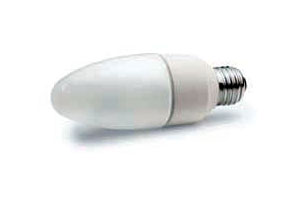Do compact fluorescent lights (CFLs) really save energy?
 When you replace incandescents with CFLs, you use less electricity for lighting, but you use more energy for heating your home in the winter, since hot burning incandescents--which produce a lot more heat than light--decrease the heating load. This is called the take-back effect. Anil Parekh, who does research for Natural Resources Canada, and his colleagues, studied the take-back effect. They wanted to know if CFLs really saved energy in a home over the course of a year.
When you replace incandescents with CFLs, you use less electricity for lighting, but you use more energy for heating your home in the winter, since hot burning incandescents--which produce a lot more heat than light--decrease the heating load. This is called the take-back effect. Anil Parekh, who does research for Natural Resources Canada, and his colleagues, studied the take-back effect. They wanted to know if CFLs really saved energy in a home over the course of a year.
The Canada study, which took place at the Canadian Center for Housing Technology (CCHT)--two identical homes that allow researchers to compare different technologies--showed that even in heating dominated climates, such as in Fairbanks, Alaska, you save energy overall by swapping out incandescents with CFLs. And in cooling climates, such as in Los Angeles, you save on lighting electricity and there is an added bonus (as if Southern Californians deserved it) you use less to cool your home in the summer, since cool CFLs, which put out 90% less heat than incandescents, are not adding to your cooling load.
Some readers may have noted that I declared my allegiance to light-emitting diodes (LEDs), in a recent blog, since they are potentially much more energy efficient than CFLs. But we'll have to live with CFLs until LEDs become more cost effective... kind of like driving my pretty-fuel-efficient 1997 Geo Prizm into the ground before investing in a newer, hybrid car, or until I quit driving. It takes a lot of energy to make a hybrid car.
Sometimes the most efficient car, or appliance, or light bulb, is the one that's already been made.
